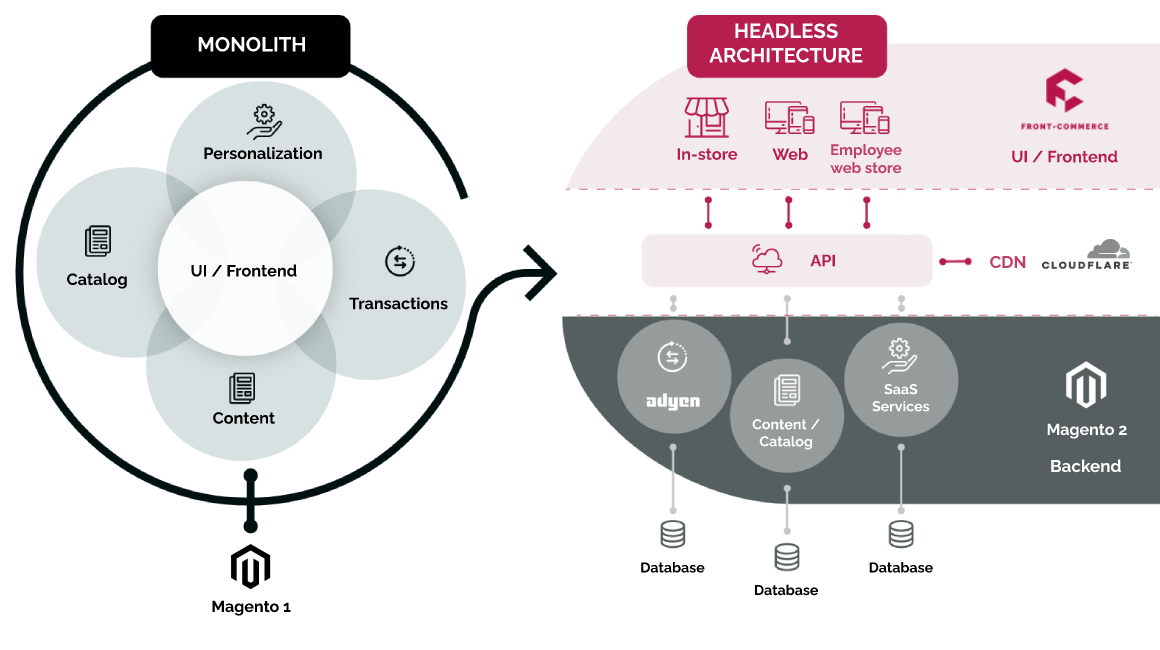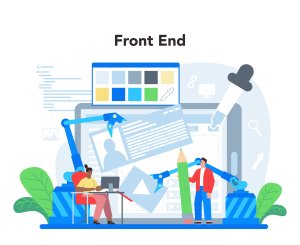Frontend development has come a long way from the days of simple HTML pages. Today, it’s a blend of art and technology, involving the creation of interactive and dynamic web applications. Modern trends such as single-page applications (SPAs), progressive web applications (PWAs), and server-side rendering (SSR) dominate the sector. JavaScript frameworks like React, Vue, and Angular continue to lead the charge, enabling developers to build fast and responsive applications. The rise of meta-frameworks such as Next.js and Nuxt.js has further blurred the lines between frontend and backend, emphasizing the importance of well-designed APIs in web development. The role of frontend developers has become increasingly demanding, requiring a mix of artistic vision, technical expertise, and a deep understanding of emerging technologies like artificial intelligence.
One of the latest innovations transforming frontend development is Frontend-as-a-Service (FEaaS). This concept promises to revolutionize how web applications are built and maintained by outsourcing frontend tasks to specialized third-party providers. FEaaS offers pre-built modules, design components, and functionality that simplify development, reduce costs, and speed up deployment. By handling updates, security, and maintenance, frontend-as-a-service allows developers to focus on high-level tasks and promotes scalability and flexibility.

The Rising Tide of Headless Commerce Solutions
The adoption of headless commerce solutions is accelerating, driven by their numerous benefits despite the challenges they present. Key advantages include increased flexibility, easier integration with third-party applications, personalized customer experiences, and the ability to deliver seamless omnichannel experiences. This architecture also future-proofs systems, reduces IT costs, and allows for extensive frontend customization. However, transitioning to headless commerce is not without its difficulties, such as user experience fragmentation, high initial budget requirements, and technical challenges related to integration and development. Despite these hurdles, businesses are embracing headless commerce to stay competitive, deliver unique customer experiences, and adapt to the modern e-commerce industry.
Key Benefits of Headless Commerce
- Agility and Flexibility: Headless commerce allows businesses to compose their tech stack with best-of-breed solutions, scaling efficiently to meet market demands.
- Unlimited Customization and Personalization: It enables businesses to create unique, personalized customer experiences that maximize conversions.
- Omnichannel Experience: Provides a consistent and seamless shopping experience across various touchpoints and devices.
- Scalability: Decoupling the frontend from the backend allows for scalable, engaging, and personalized customer experiences.
- Speed and Time-to-Market: Accelerates time to market by enabling quick updates to the customer-facing part of the website.
- Best-of-Breed Integrations: Facilitates seamless integrations with the latest technologies and third-party services.
Real-World Examples
Front-Commerce exemplifies the benefits of this approach. By offering unlimited control over the user experience and user interface, Front-Commerce enables businesses to create unique and future-proof systems. The platform’s flexibility and scalability allow for rapid adaptations to changing customer expectations, while its commitment to an omnichannel experience ensures consistent engagement across all touchpoints.
Frontend-as-a-Service (FEaaS): Simplifying Frontend Development
FEaaS is a game-changer in frontend development, providing managed services that simplify the creation and maintenance of web applications. This approach aligns with the trend towards modular and composable frontend architectures, offering significant advantages for businesses looking to streamline their operations.
Key Benefits of frontend-as-a-service with Front-Commerce
- Flexibility and Composability: Front-Commerce’s modular architecture empowers businesses to build tailored solutions, adapting to evolving requirements seamlessly.
- Headless Commerce Expertise: Deep understanding of headless commerce allows Front-Commerce to decouple frontend and backend efficiently.
- Optimized User Experiences: Prioritizes user-centric design, enhancing overall customer engagement and brand interaction.
- Efficient Management: Managed services alleviate operational burdens, letting businesses focus on innovation and growth.
- Empowering Developers: Offers a developer-friendly environment with tools and resources for efficient solution creation.
- Continuous Innovation and Support: Commitment to excellence ensures businesses have access to the latest capabilities and responsive customer support.

What is a front-end as a service?
The Surge in Demand for Managed Services
The demand for managed services in the e-commerce ecosystem is growing rapidly. Businesses face numerous challenges in managing their frontend infrastructure, from maintaining high performance to ensuring security and compliance. Managed services, such as those provided by Front-Commerce, address these issues by offering scalable solutions that enhance efficiency, user experience, and overall business performance.
Emergence of New FEaaS Providers
New frontend-as-a-service providers entering the market and offering innovative solutions. Front-Commerce stands out in this competitive environment by delivering tailored services that meet the specific needs of businesses. By leveraging these services, companies can future-proof their frontend development, stay ahead of technological trends, and maintain a competitive edge.
Conclusion
The future of frontend development is bright, with concepts like Frontend-as-a-Service paving the way for more efficient, flexible, and scalable web applications. As businesses continue to adopt headless commerce solutions and leverage the benefits of FEaaS, they can look forward to creating unique, personalized, and engaging customer experiences. Front-Commerce, with its commitment to innovation and excellence, is well-positioned to help businesses navigate this dynamic landscape and achieve long-term success. By staying ahead of technology trends and embracing new approaches, companies can remain competitive, relevant, and ready to capitalize on emerging opportunities.
